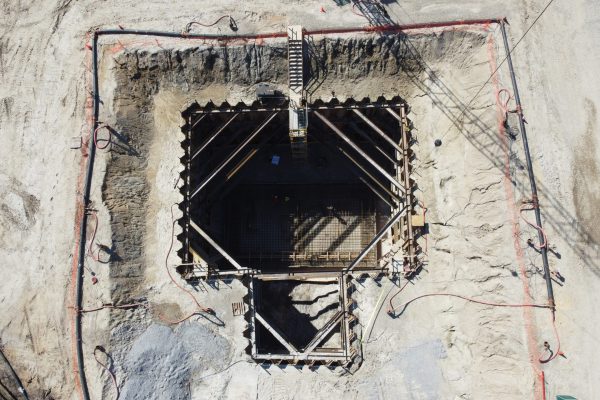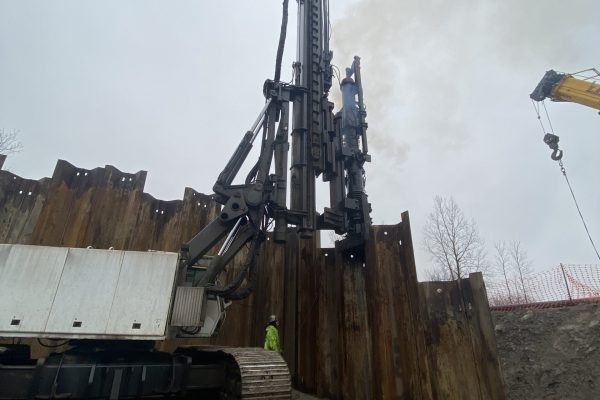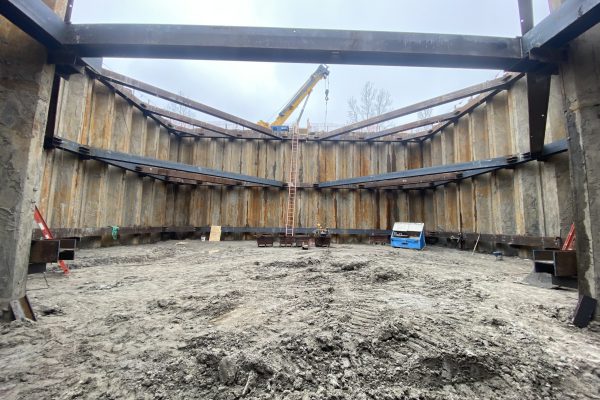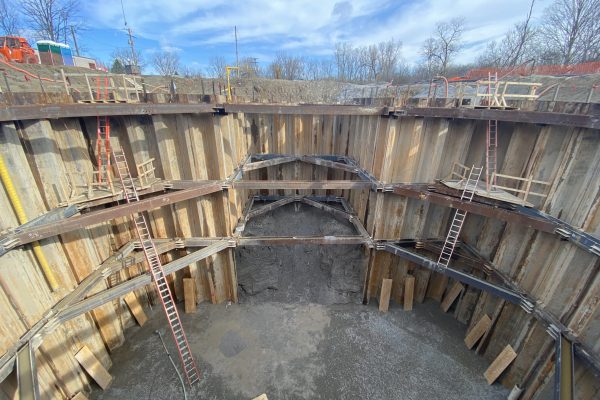The Genesee County Drain Commissioner, Division of Water and Waste Services (WWS) owns and operates the sanitary sewer piping and pumping stations in Genesee County outside the City limits of Flint. Over the years, WWS’s collection system has expanded and realigned to accommodate both residential and industrial growth of the County.
WWS’s original collection system concept moved sewage flows in a clockwise circle around the City of Flint, ultimately discharging to the wastewater treatment plant (WWTP) in the northwest quadrant of the County. As the northern side of the County developed economically, larger and larger flows required the addition of a new northside interceptor sewer. The addition of the new interceptor stripped significant flows from the tributary area of Lift Station No. 3.
Lift Station No. 3 was originally designed in the early 1960s with the advent of the County’s wastewater collection system. The station was “improved” in the 1990s which added a second force main and larger pumps with a firm capacity of 28 million gallons per day (mgd). Following the installation of the northside interceptor, lowered flows resulted in pumping station inefficiencies and significant operational issues for the station. WWS used variable frequency drives to slow pump speeds down and lower pumping rates which led to ragging issues and equipment damage.
It became clear to WWS that their infrastructure was incorrectly sized and in need of serious repair or replacement. WWS relied on Jones & Henry Engineers (J&H) to assist with the evaluation of the existing Lift Station Nos. 3 and 4 which are tributary to one another. J&H staff engineers performed site visits and evaluated the lift station’s structural, mechanical, electrical, instrumentation, and process equipment. Pump station conditions were scored using a rating system developed by City maintenance staff and J&H. Pump drawdown tests were performed by J&H staff during evaluations using amp draws and physical valve cycling to develop actual/current pump curves. These curves were compared to the original factory curves to determine the remaining useful life of the pumping equipment.
WWS has an extensive network of influent flow meters and networked rain gauges to track increases in flow rate due to storm events. Collection system geometry often leads to backwatering of the influent meters which can lead to data inconsistencies. To combat the irregular data, J&H installed new meters upstream of the WWS meters creating more consistent and repeatable data. Effluent flow meter data was utilized as a back-check to ensure that overall pumpage matched the extrapolated storm models’ flow rate.
Data was collected for a period of 90 days which included five significant rain events. With the flow and weather data, J&H was able to fully evaluate the performance of the system through a variety of design storms. J&H was able to develop a sizing methodology which allowed WWS to propose a new pump station with a lower 18 mgd capacity. The Michigan Department of Environment, Great Lakes, and Energy (EGLE) agreed with the presented data and approved the right-sized capacity for the development of a replacement lift station.
The flow model/meter data along with the pump station evaluations, conceptual improvement designs, and projected construction costs were presented in a report to the Drain Commissioner. Ultimately, WWS utilized the collected data and recommendations to come to the decision and replace the existing lift station with an improved, right-sized Lift Station No. 3. The flow data presented in the report was utilized as a basis of design for the new lift station.
The newly designed Lift Station No. 3 includes four submersible sewage pumps with two different capacities to handle the diurnal flow patterns most effectively. Using a pair of 4.5 mgd pumps and a pair of 10 mgd pumps will give the new station a firm capacity of 19 mgd, a reduction of 9 mgd from the original outdated/oversized station. Additional design elements include a mechanically-cleaned bar screen, screening compactor/washer, dual electrical services with keyed interconnects, a security system, and redundant wet wells to enhance maintainability.
Site improvements include the addition of 500 lineal feet of Class IV reinforced concrete influent sewer pipe, valving, flow meters, and connection to twin prestressed concrete cylinder pipe (PCCP) force mains.
With the location of the lift station being directly adjacent to Thread Creek, J&H worked closely with EGLE to evaluate wetlands and floodplain impacts and permitting. Additional permitting was coordinated with the Genesee County Drain Commissioner, Division of Surface Water Management, City of Burton, and the Michigan Department of Licensing and Regulatory Affairs (LARA).
Design was completed on budget and construction is scheduled to be completed in early 2024.





